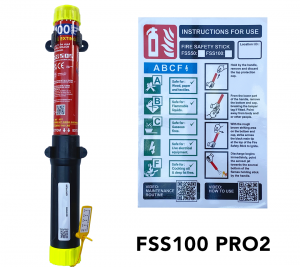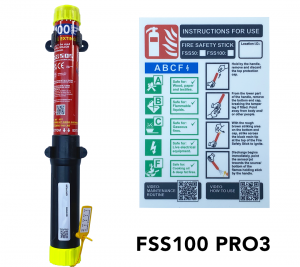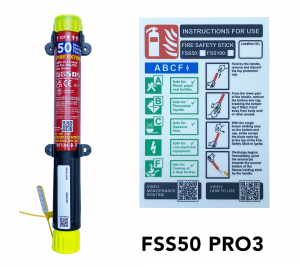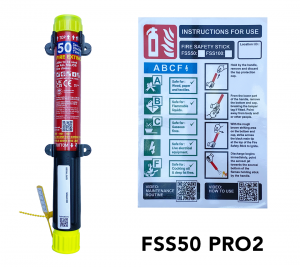Commercial Vehicles

The Vital Role of Fire Safety in Commercial Vehicles:
A Guide to the Fire Safety Stick
In the world of commercial transportation, fire safety is not just a recommendation; it is a critical component of risk management, fleet maintenance, and driver well-being. Vehicle fires can lead to catastrophic losses, including damage to expensive assets, disruption of business operations, and, most importantly, danger to life. While traditional fire extinguishers have long been the standard, a new, innovative solution is gaining traction: the Fire Safety Stick.
The Risks and Regulations of Commercial Vehicle Fires
Commercial vehicles, including trucks, vans, HGVs (Heavy Goods Vehicles), and electric vans, face unique fire risks. These can stem from a variety of sources:
Flammable materials: Engine components, fuels like petrol and diesel, and transported goods can all pose a significant fire hazard.
Electrical systems: Modern commercial vehicles are packed with complex electronics, and faulty wiring or an overheating battery (especially in electric vehicles and EV fleets) can be a prime cause of ignition.
Friction and heat: Brakes and mechanical parts can overheat, particularly during long journeys or in demanding conditions.
In the UK and across Europe, strict regulations govern fire safety in commercial vehicles, particularly those carrying dangerous goods. The Carriage of Dangerous Goods (CDG) and ADR (European Agreement concerning the International Carriage of Dangerous Goods by Road) regulations mandate specific types and sizes of dry powder fire extinguishers based on the vehicle’s mass and cargo. For example, an HGV over 7.5 tonnes carrying dangerous goods must carry a total of 12kg of dry powder across at least two extinguishers. Even for vehicles not transporting dangerous goods, a 2kg dry powder extinguisher is often the minimum recommendation.
Introducing the Fire Safety Stick: A Revolutionary Fire Extinguisher
The Fire Safety Stick is a modern, lightweight, and highly effective alternative or complementary fire safety device. Unlike traditional pressurized extinguishers that use powder, foam, or water, the Fire Safety Stick employs a solid, non-pressurized potassium-based compound. When activated, it releases a powerful aerosol that interrupts the chemical chain reaction of the fire at a molecular level.
Key Features and SEO Keywords:
Lightweight & Compact: Weighing from as little as 215g, the Fire Safety Stick is incredibly easy to handle and store. This is a significant advantage over bulky 2kg or 6kg extinguishers, freeing up valuable space in a truck cab or van.
No Mess, No Residue: A major drawback of dry powder extinguishers is the corrosive and difficult-to-clean residue they leave behind, which can damage a vehicle’s engine, electronics, or cargo. The Fire Safety Stick leaves no corrosive mess, making it an ideal choice for protecting sensitive equipment and high-value goods.
Longer Discharge Time: A typical 1kg dry powder extinguisher has a discharge time of less than 7 seconds. The Fire Safety Stick offers a minimum discharge time of 50 seconds (and a larger 100-second version), providing more time to effectively tackle a fire and aid in a safe escape.
Versatile Fire Suppression: The device is certified for multiple fire classes, including Class A (solids like wood and paper), Class B (flammable liquids like petrol and oil), Class C (flammable gases), Class F (cooking oils), and Electrical fires (up to 100,000v).
Maintenance-Free & Long Shelf Life: One of the most compelling benefits for commercial fleets is the elimination of annual servicing costs and downtime. The Fire Safety Stick has a guaranteed 15-year shelf life, which is three times longer than most traditional extinguishers.
Eco-Friendly and Safe: The non-toxic, non-pressurised formula is safe to breathe and environmentally friendly. This is a crucial consideration for drivers in enclosed spaces and for businesses aiming to improve their carbon footprint.
Fire Safety Stick vs. Traditional Extinguishers: A Fleet Manager’s Perspective
While the Fire Safety Stick cannot currently replace the legally mandated fire extinguishers under ADR and other regulations for vehicles carrying dangerous goods, it serves as a powerful complementary tool. Fleet managers are increasingly adopting them for many reasons:
Cost Savings: The long shelf life and zero maintenance requirements result in significant long-term cost reductions compared to traditional extinguishers that need regular servicing and replacement.
Improved Driver Safety & Training: The simple activation process and lightweight design mean minimal training is required, empowering drivers to react quickly and effectively in an emergency.
Asset Protection: By providing a clean, effective fire-fighting tool, businesses can better protect their fleet vehicles, valuable plant machinery, and the goods they transport from fire damage and secondary damage from extinguishing agents.
Early Intervention: Its rapid and clean suppression makes it perfect for tackling fires in their early stages, preventing them from escalating into a major incident.
In summary, the Fire Safety Stick is a game-changer for vehicle safety. Its modern technology offers a clean, reliable, and cost-effective solution for fire protection, providing peace of mind for commercial vehicle drivers and fleet operators across the UK and beyond.
Livestock Transport Fire on M6
“Beckys High-Stakes Drive: How a Quick-Thinking Move and a Fire Safety Stick Saved the Day on the M6!”
Why have companies left their traditional extinguishers behind?
What are the results of the Fire Safety Stick for commercial fleets:
✅ Fire coverage for potential fire risks
✅ Protection of assets and employees
✅ No professional annual servicing, cutting your fleet costs
✅ A minimum of a 15-year shelf life (3x longer than most extinguishers) means less replacement costs
✅ Weighing from 215g means either better fuel efficiency or an increased goods capacity per vehicle
✅ No corrosive mess, which means no risk of electrical devices or goods becoming damaged
✅ Superior downtime reduction due to the lack of servicing
✅ No chance of accidental discharge, means less risk of downtime, no risk of damage to goods or electrics
✅ Eco-friendly! the Fire Safety Stick has no ozone depletion potential and can be entirely recycled
✅ Improve carbon footprint, due to lack of servicing, improved fuel efficiency and environmentally friendly
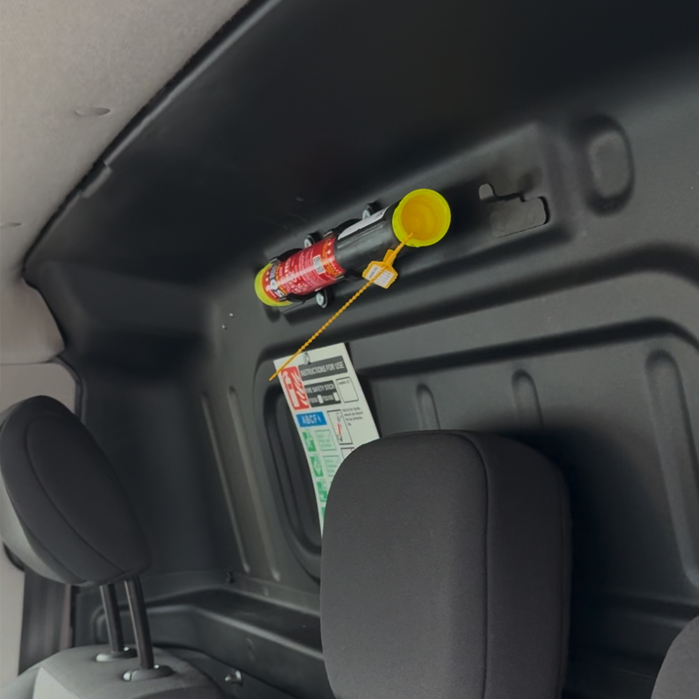
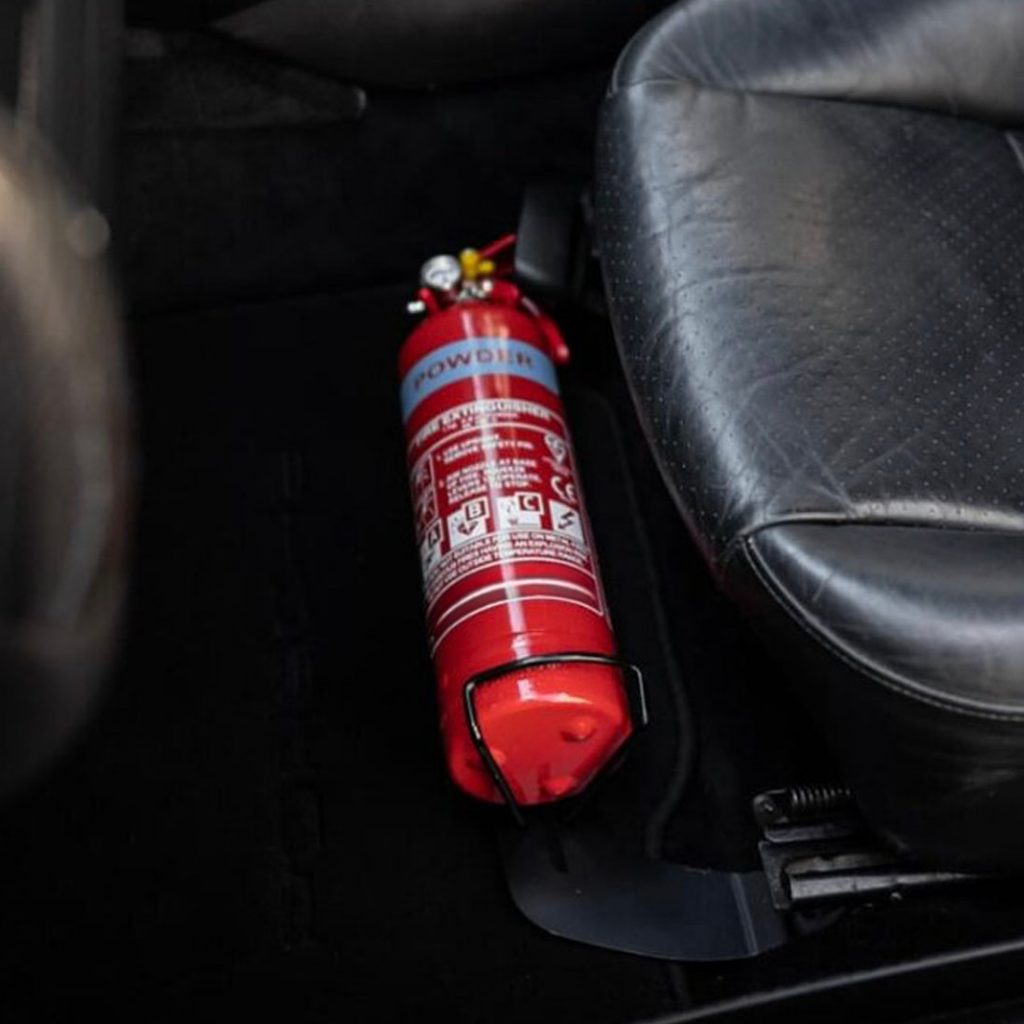
Traditional extinguishers provided them with:
✅ Fire coverage for potential fire risks
✅ Protection of assets and employees
But what were the issues?:
❌ Costly upkeep with annual servicing bills
❌ Downtime for vehicles due to annual servicing
❌ Further downtime if extinguisher (namely powder) accidentally depressurises in transit
❌ Potential contamination of electrical devices or goods due to corrosive powder or foam
❌ Vehicle weight because of heavy canisters, leading to reduced fuel efficiency or reduced goods capacity
❌ Administration time taken to arrange extinguisher servicing for each vehicle
❌ Risk of the vehicle being non-compliant if the extinguisher technician did not place it on the vehicle himself
What you will gain by switching to the Fire Safety Stick



